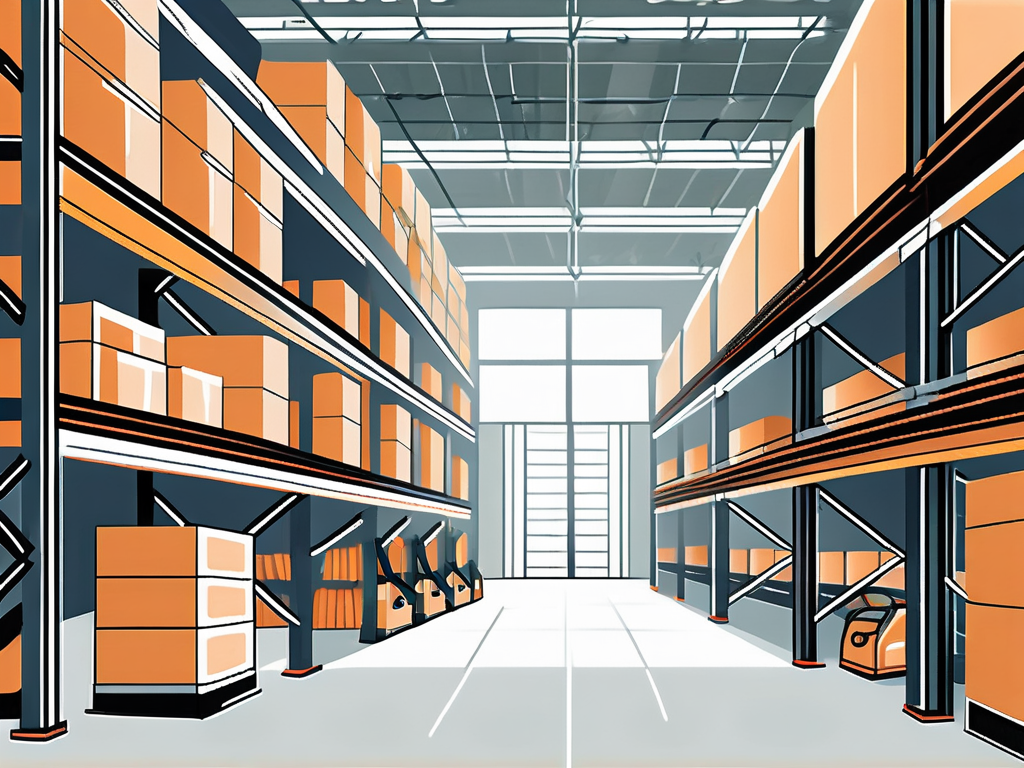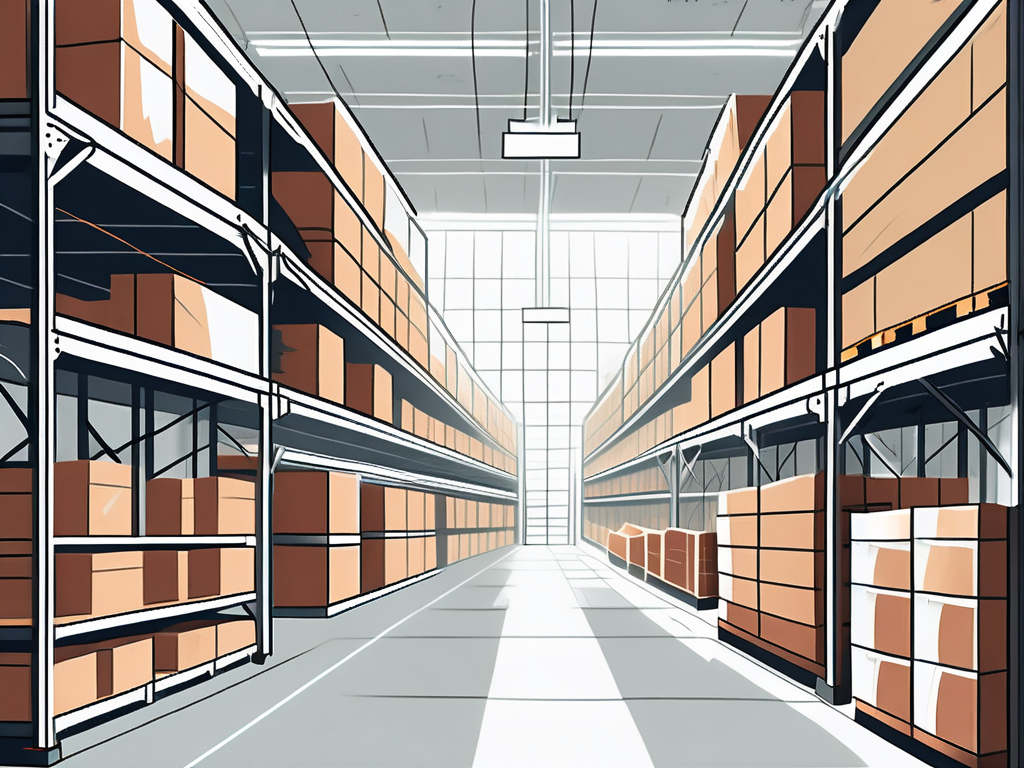
In today’s competitive business environment, improving warehouse efficiency is essential for maximizing productivity and reducing costs. A well-organized and efficient warehouse can enhance customer satisfaction, streamline operations, and ultimately boost the bottom line. In this article, we will explore five tips that can help you achieve optimal warehouse efficiency.
Understanding Warehouse Efficiency
Before diving into the tips, let’s first understand the importance of warehouse efficiency. A highly efficient warehouse ensures that goods are stored, picked, and shipped in the most effective and timely manner. It minimizes errors, reduces waste, and maximizes the utilization of resources, such as labor and storage space. By optimizing warehouse efficiency, you can enhance customer service levels, increase order accuracy, and improve overall operational performance.
The Importance of Warehouse Efficiency
Efficiency in a warehouse is crucial for several reasons. Firstly, it allows you to meet customer demands more efficiently and accurately. By having a streamlined order fulfillment process, you can ensure that products reach customers on time, leading to higher customer satisfaction and repeat business. Secondly, an efficient warehouse helps reduce costs by minimizing unnecessary labor, eliminating stockouts, and avoiding excess inventory. Lastly, efficiency improves overall operational agility, enabling your business to respond rapidly to market changes and customer requirements.
Key Factors Affecting Warehouse Efficiency
Several factors influence warehouse efficiency. These include inventory management, warehouse layout, picking strategies, order processing, and the use of technology. By addressing these factors systematically, you can optimize your warehouse operations and achieve higher levels of efficiency.
Let’s delve deeper into the key factors affecting warehouse efficiency. Inventory management plays a critical role in ensuring that the right products are available at the right time. By implementing effective inventory control systems, such as real-time tracking and automated replenishment, you can minimize stockouts and overstock situations, leading to improved efficiency and reduced costs.
Another factor to consider is the warehouse layout. A well-organized layout can significantly enhance efficiency by reducing travel time and improving accessibility. By strategically placing high-demand items closer to the shipping area and optimizing the flow of goods, you can minimize the time spent on picking and packing, resulting in faster order fulfillment and increased productivity.
In addition to inventory management and warehouse layout, picking strategies also play a crucial role in warehouse efficiency. By implementing efficient picking methods, such as batch picking or zone picking, you can minimize travel time and increase the number of orders processed per hour. This not only improves efficiency but also reduces labor costs and improves order accuracy.
Furthermore, the use of technology can greatly enhance warehouse efficiency. Implementing a warehouse management system (WMS) can automate various processes, including inventory tracking, order processing, and labor management. By leveraging technology, you can eliminate manual errors, improve data accuracy, and streamline operations, leading to higher efficiency and productivity.
By addressing these key factors systematically and continuously monitoring and optimizing your warehouse operations, you can achieve and maintain high levels of efficiency. Remember, warehouse efficiency is not a one-time effort but an ongoing process that requires constant evaluation and improvement. By doing so, you can stay ahead of the competition, meet customer expectations, and drive business growth.
Tip 1: Implementing Automated Systems
One of the most effective ways to improve warehouse efficiency is by implementing automated systems. Automation can significantly enhance productivity, accuracy, and speed in various warehouse processes.
Automation has revolutionized the way warehouses operate, offering a wide range of benefits that go beyond just efficiency. By reducing human error, automated systems can also improve workplace safety by minimizing the risk of accidents and injuries. Additionally, automation can help warehouses meet the growing demands of e-commerce and omnichannel fulfillment, where speed and accuracy are crucial for customer satisfaction.
Benefits of Automation in Warehousing
Automation offers numerous benefits for warehouses. It reduces human error, speeds up order processing times, and enhances inventory accuracy. Automated systems can handle repetitive and time-consuming tasks, such as sorting, labeling, and packaging, with greater precision and efficiency. By automating these processes, you can minimize operational bottlenecks, improve resource allocation, and free up your staff to focus on more complex tasks.
Moreover, automation can also provide valuable data insights that can inform strategic decision-making. By collecting and analyzing data on warehouse operations, businesses can identify areas for further optimization, predict future trends, and improve overall performance. This data-driven approach can lead to cost savings, better inventory management, and increased customer satisfaction.
Choosing the Right Automation Tools
When considering automation tools for your warehouse, it’s important to assess your specific needs and requirements. This includes considering factors such as order volume, product variety, and your budget. Common automation tools include conveyor systems, robotic pickers, automated guided vehicles (AGVs), and warehouse management systems (WMS). Each tool has its own advantages and limitations, so it’s crucial to carefully evaluate and choose the ones that align best with your business goals and operational needs.
Furthermore, integrating automation tools with other technologies, such as Internet of Things (IoT) devices and artificial intelligence, can further enhance the efficiency and capabilities of your warehouse operations. These advanced technologies can enable real-time tracking of inventory, predictive maintenance of equipment, and adaptive decision-making based on changing conditions. By embracing a holistic approach to automation, warehouses can stay ahead of the curve and remain competitive in today’s fast-paced business environment.
Tip 2: Optimizing Warehouse Layout
The layout of your warehouse plays a vital role in its overall efficiency. A poorly designed layout can lead to wasted space, inefficient processes, and unnecessary delays. Optimizing the warehouse layout can help streamline operations, reduce travel time, and improve overall productivity.
When it comes to optimizing your warehouse layout, it’s essential to delve deeper into the specific needs of your business. Factors such as inventory turnover rates, order picking methods, and storage requirements all play a crucial role in determining the most effective layout for your warehouse. By conducting a thorough analysis of these factors, you can tailor your layout to meet the unique demands of your operations.
Principles of Effective Warehouse Layout
Effective warehouse layout design involves considering factors such as product flow, space utilization, equipment placement, and ease of navigation. By grouping similar products together, utilizing vertical space effectively, and placing frequently picked items closer to the shipping area, you can minimize travel distances and maximize efficiency. Implementing clear signage, ensuring proper lighting, and maintaining a clutter-free environment are also crucial for promoting safety and efficiency within the warehouse.
Furthermore, incorporating ergonomic principles into your warehouse layout can enhance worker productivity and reduce the risk of injuries. Designing workstations that are ergonomically friendly, providing adequate rest areas, and optimizing walking paths can contribute to a healthier and more efficient work environment.
Tools for Warehouse Layout Planning
Various tools and technologies are available to assist with warehouse layout planning. Utilizing software applications, such as computer-aided design (CAD) programs, can help you visualize different layout options and assess their impact on operational efficiency. Additionally, leveraging virtual reality (VR) or augmented reality (AR) tools can provide a more immersive and interactive experience, allowing you to simulate different layout scenarios and make informed decisions.
By harnessing the power of these advanced tools, you can fine-tune your warehouse layout with precision, taking into account intricate details and optimizing every aspect of your operational flow. This proactive approach to warehouse layout planning can result in significant cost savings, improved productivity, and a competitive edge in today’s fast-paced business environment.
Tip 3: Enhancing Inventory Management
Efficient inventory management is a cornerstone of warehouse efficiency. By having a clear understanding of your inventory levels, optimizing stock replenishment, and implementing effective tracking systems, you can minimize stockouts, reduce excess inventory, and improve order fulfillment processes.
The Role of Inventory Management in Efficiency
Inventory management directly impacts warehouse efficiency in multiple ways. Accurate inventory data enables better demand forecasting, allowing you to optimize stock levels and reduce storage costs. Effective stock rotation practices reduce waste and prevent obsolescence, ensuring that products are utilized before they expire or become outdated. Streamlined inventory processes, such as barcode scanning or RFID tagging, enable faster and more accurate order picking, enhancing overall efficiency.
Techniques for Better Inventory Management
To enhance inventory management, consider implementing techniques such as ABC analysis, just-in-time (JIT) inventory management, and regular cycle counting. ABC analysis categorizes products based on their value and consumption frequency, allowing for more efficient storage and replenishment strategies. JIT inventory management minimizes storage requirements by delivering products as needed while maintaining product availability. Regular cycle counting ensures accurate inventory records and helps identify discrepancies or potential issues before they impact efficiency.
Tip 4: Training and Empowering Staff
Investing in staff training and empowerment is crucial for improving warehouse efficiency. Equipping your employees with the necessary skills, knowledge, and resources empowers them to perform their roles effectively and contribute to overall productivity.
The Impact of Staff Training on Efficiency
Well-trained staff are more efficient, confident, and productive. Providing comprehensive training programs ensures that employees understand their responsibilities, have the necessary job-specific skills, and are aware of safety protocols. Continuous training and upskilling also help employees adapt to new technologies and industry changes, enabling them to contribute to process improvements and innovation.
Strategies for Employee Empowerment
Empowering your warehouse staff involves giving them the autonomy to make decisions, encouraging feedback and suggestions, and fostering a culture of continuous improvement. Creating clear communication channels enables employees to share ideas, concerns, and best practices, leading to enhanced teamwork and increased efficiency. Recognizing and rewarding employee contributions can further motivate them to perform at their best and take ownership of their responsibilities.
Conclusion
Improving warehouse efficiency requires a holistic approach that addresses various factors, ranging from implementing automation tools to optimizing warehouse layout, enhancing inventory management, and empowering staff. By following these five tips, you can optimize your warehouse operations and achieve higher levels of efficiency, ultimately driving customer satisfaction, reducing costs, and gaining a competitive advantage in the market.



